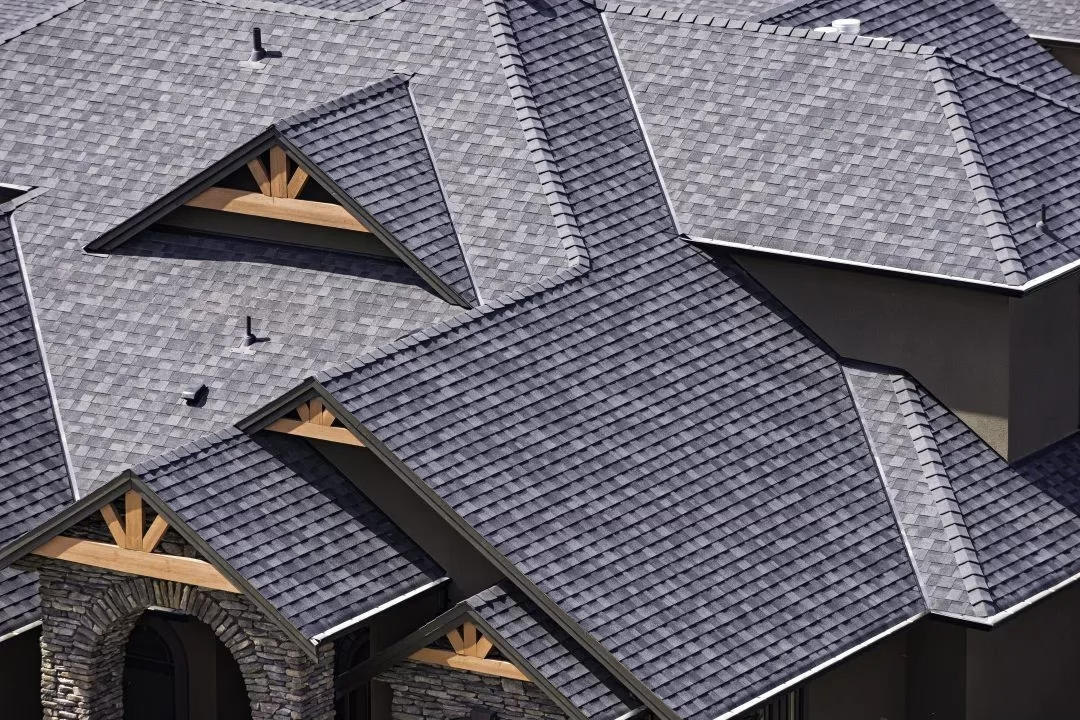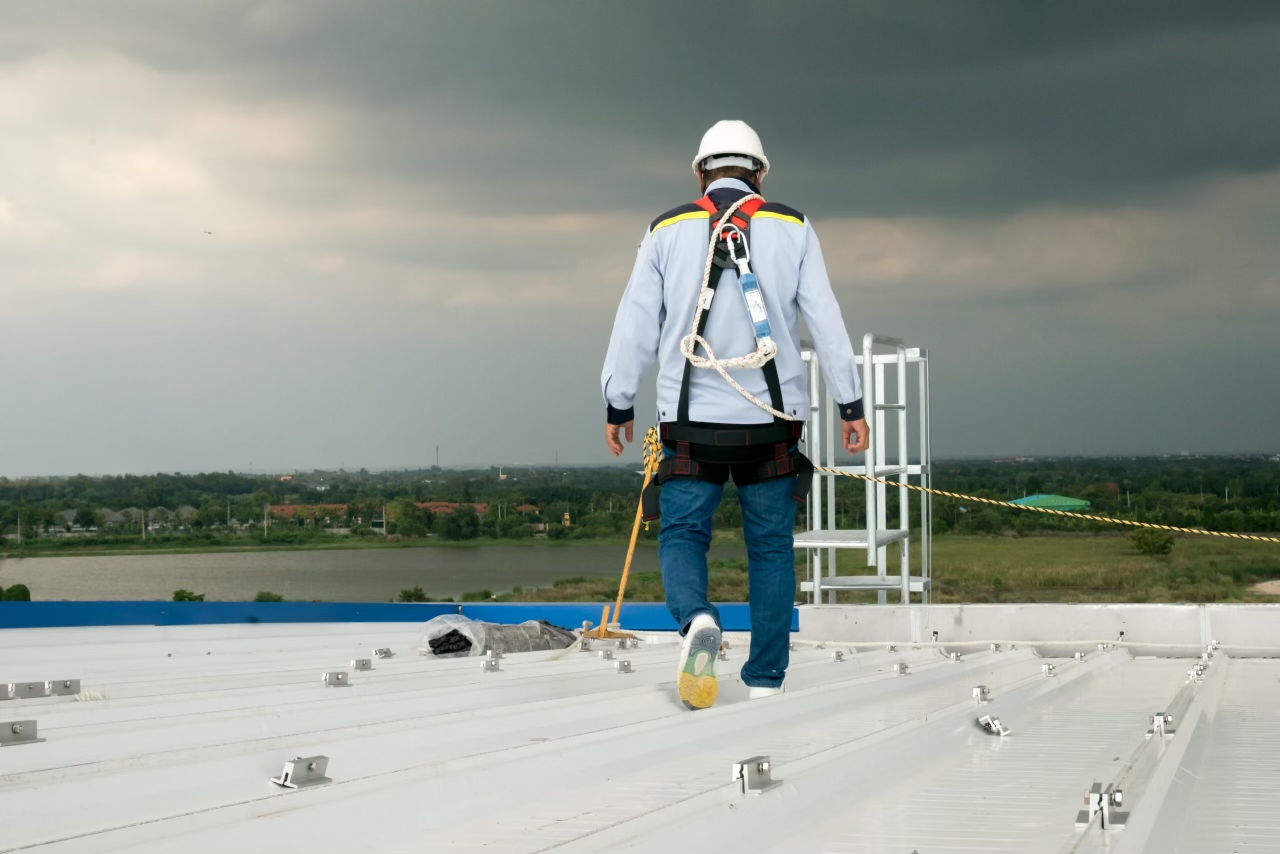Ultimate Guide to Asphalt Shingle Roof Replacement: Tips, Costs, and Expert Insights
Is your roof showing signs of age, wear, or damage? Replacing asphalt shingles might be the solution you need. In this ultimate guide to asphalt shingle roof replacement, we'll walk you through everything from understanding the signs that it's time for a replacement to the costs involved and expert tips to ensure a smooth process.

Summit Roofing Team
Expert Authors

Key Takeaways
- Learn essential maintenance tips for Alabama and Georgia's unique climate
- Understand seasonal maintenance schedules and priorities
- Identify when to DIY vs. when to call professionals
- Save money through preventive care and early problem detection
Is your roof showing signs of age, wear, or damage? Replacing asphalt shingles might be the solution you need. In this ultimate guide to asphalt shingle roof replacement, we'll walk you through everything from understanding the signs that it's time for a replacement to the costs involved and expert tips to ensure a smooth process. Whether you're a seasoned DIY enthusiast or new to home improvement, this guide is tailored to equip you with the knowledge you need. Discover how to choose the right materials, what to expect during installation, and how to enhance the durability and aesthetic of your home. Say goodbye to leaks and unsightly shingles—your new roof is just a few steps away. Let's dive into the essential insights that will help you make informed decisions for a successful roof replacement project!
Signs You Need a Roof Replacement
The first step in determining whether your asphalt shingles need replacement is recognizing the signs of wear and damage. One of the most obvious indicators is the presence of leaks inside your home. Water stains on the ceiling or walls, especially after a heavy rain, are clear signs that your roof is compromised. Additionally, if you notice consistently damp or soggy spots in your attic, it might be due to roof leaks.
Another sign to look out for is the physical condition of the shingles themselves. Over time, shingles can curl, crack, or become loose. If you observe any of these issues, it might indicate that your shingles are nearing the end of their lifespan. Moreover, if you see granules from the shingles accumulating in your gutters, it's a sign that the protective coating of the shingles is wearing off, which reduces their effectiveness and leaves your roof vulnerable to damage.
Age is also a critical factor in determining the need for a roof replacement. Asphalt shingles typically last between 20 and 25 years. If your roof is approaching or has surpassed this age, it might be time to consider a replacement, even if there are no visible signs of damage. Proactive replacement can prevent more severe issues and provide peace of mind knowing that your home is well-protected.
Types of Asphalt Shingles: Which One is Right for You?
When it comes to choosing asphalt shingles for your roof replacement, there are several types to consider, each with its own advantages and characteristics. The most common types include three-tab shingles, architectural shingles, and premium shingles. Understanding the differences can help you make an informed decision that suits your needs and preferences.
Three-tab shingles are the most basic type of asphalt shingles. They are named for their distinct cutouts, or tabs, which give them a uniform appearance. These shingles are generally less expensive and provide a clean, flat look. However, they are less durable and have a shorter lifespan compared to other types of shingles, typically lasting around 20 years.
Architectural shingles, also known as dimensional or laminate shingles, offer a more robust and aesthetically pleasing option. These shingles are made with multiple layers of asphalt, which gives them a thicker and more textured appearance. Architectural shingles are more durable than three-tab shingles, with a lifespan of 25 to 30 years. They also offer better resistance to wind and hail, making them a popular choice for homeowners looking for a balance of durability and visual appeal.
Premium shingles are the top-tier option, offering superior durability and unique designs that can mimic the appearance of natural materials like slate or wood. These shingles are made with advanced materials and manufacturing techniques, providing increased resistance to weathering and a lifespan of 50 years or more. While they come with a higher price tag, premium shingles offer long-term value and can significantly enhance the curb appeal of your home.
Cost Breakdown of Asphalt Shingle Roof Replacement
Understanding the cost of asphalt shingle roof replacement is essential for budgeting and planning your project. The total cost can vary widely based on several factors, including the size of your roof, the type of shingles you choose, and the complexity of the installation. Here's a detailed breakdown of the costs you can expect.
The most significant portion of the cost is the shingles themselves. Three-tab shingles typically cost $100 to $200 per square (100 square feet), while architectural shingles range from $250 to $400 per square. Premium shingles can cost $450 to $700 per square or more, depending on the quality and design. In addition to shingles, you'll need underlayment, nails, and other materials, which can add an extra $100 to $200 per square.
Labor costs are another major component of roof replacement expenses. Hiring a professional roofing contractor typically costs $3 to $5 per square foot, depending on the complexity of the job and local labor rates. For a 2,000-square-foot roof, this can add up to $6,000 to $10,000 in labor costs alone. If your roof has multiple slopes, valleys, or other architectural features, the labor costs may be higher due to the increased difficulty of the installation.
Additional costs to consider include removing and disposing of the old shingles, which can range from $1 to $5 per square foot. You may also need to budget for any necessary repairs to the underlying roof structure, such as replacing damaged decking or reinforcing the frame. These repairs can add several hundred to several thousand dollars to the total cost, depending on the extent of the damage.
DIY vs. Hiring a Professional: Pros and Cons
Deciding whether to tackle your asphalt shingle roof replacement as a DIY project or hire a professional contractor is an important consideration. Both options have their advantages and disadvantages, and the best choice depends on your skills, experience, and comfort level with the project.
One of the main advantages of a DIY roof replacement is cost savings. By handling the installation yourself, you can save on labor costs, which can be a significant portion of the overall expense. Additionally, a DIY project allows you to have complete control over the process, from selecting materials to managing the timeline. This can be particularly appealing if you enjoy hands-on projects and have the necessary skills and tools.
However, DIY roof replacement also comes with several challenges and risks. Roofing work is physically demanding and can be dangerous, especially if you're not experienced with working at heights or using the necessary equipment. Improper installation can lead to leaks, structural damage, and reduced lifespan of the roof, potentially costing more in repairs down the line. Additionally, many manufacturers' warranties require professional installation to remain valid, so a DIY job might void your warranty.
Hiring a professional roofing contractor, on the other hand, offers peace of mind and assurance that the job will be done correctly. Experienced contractors have the skills, tools, and knowledge to handle the installation efficiently and safely. They can also identify and address any underlying issues with your roof structure, ensuring a thorough and high-quality replacement. While the upfront cost is higher, the long-term benefits of a professionally installed roof can outweigh the initial expense.
The Roof Replacement Process: Step-by-Step Guide
Replacing an asphalt shingle roof involves several key steps, each of which is essential for ensuring a successful and durable installation. Here's a step-by-step guide to the roof replacement process, whether you're doing it yourself or working with a contractor.
The first step is to prepare the work area by removing any obstacles and protecting your property. This includes covering plants and outdoor furniture with tarps and setting up safety equipment such as scaffolding or ladders. It's also important to check the weather forecast and choose a dry, calm day for the project to avoid complications from rain or wind.
Next, the old shingles need to be removed. This involves using a roofing shovel or pry bar to lift and remove the shingles, starting from the top of the roof and working your way down. Be sure to collect and dispose of the old shingles properly, as they can be heavy and bulky. Once the shingles are removed, inspect the underlying roof deck for any damage or rot, and make any necessary repairs or replacements.
After the old shingles are removed and the deck is repaired, the next step is to install the underlayment. This is a waterproof layer that provides additional protection against moisture and helps prevent leaks. Roll out the underlayment starting from the bottom edge of the roof and overlap each successive layer by several inches. Secure the underlayment with roofing nails, making sure to smooth out any wrinkles or bubbles.
With the underlayment in place, it's time to install the new shingles. Start by laying a starter strip along the bottom edge of the roof, which helps create a straight edge and prevents wind from lifting the shingles. Then, begin laying the shingles from the bottom up, staggering the seams to prevent water infiltration. Use roofing nails to secure each shingle, following the manufacturer's guidelines for nail placement and spacing. Continue working your way up the roof, cutting and fitting shingles as needed around vents, chimneys, and other obstacles.
Finally, install the ridge cap shingles along the peak of the roof. These shingles provide the finishing touch and help protect the roof's ridge from water infiltration. Secure the ridge cap shingles with roofing nails, making sure to cover all exposed nails with roofing cement for added protection. Once all the shingles are in place, clean up the work area and inspect the roof for any missed spots or loose shingles.
Essential Tools and Materials for Asphalt Shingle Replacement
Having the right tools and materials is crucial for a successful asphalt shingle roof replacement. Whether you're doing the job yourself or hiring a professional, here's a list of the essential items you'll need to complete the project.
First and foremost, you'll need the shingles themselves. As mentioned earlier, there are several types of asphalt shingles to choose from, including three-tab, architectural, and premium shingles. Be sure to purchase enough shingles to cover your entire roof, plus a few extra bundles to account for waste and mistakes. You'll also need underlayment, which provides an additional layer of protection against moisture and leaks.
In addition to shingles and underlayment, you'll need a variety of roofing nails. These should be galvanized to resist rust and corrosion and long enough to penetrate both the shingles and the roof deck. A roofing nailer or hammer will be necessary for driving the nails, along with a utility knife for cutting shingles to size. A chalk line is also helpful for ensuring straight rows and proper alignment of the shingles.
Safety equipment is another essential consideration. This includes a sturdy ladder or scaffolding for accessing the roof, as well as fall protection gear such as a harness and safety rope. Non-slip shoes and gloves are also important for protecting your hands and feet while working. Additionally, wearing a hard hat and safety glasses can help protect you from falling debris and other hazards.
Other tools and materials you may need include a roofing shovel or pry bar for removing old shingles, a hammer or nail puller for extracting nails, and a roofing hatchet for cutting and fitting shingles. A caulk gun and roofing cement are also useful for sealing around vents, chimneys, and other roof penetrations. Finally, don't forget to have plenty of tarps on hand for protecting your property and collecting debris.
Maintenance Tips for Extending the Life of Your Asphalt Roof
Once your new asphalt shingle roof is installed, proper maintenance is key to ensuring its longevity and performance. Regular maintenance can help prevent damage, extend the life of your roof, and save you money on repairs and replacements. Here are some essential tips for keeping your asphalt roof in top condition.
One of the most important maintenance tasks is regular roof inspections. It's a good idea to inspect your roof at least twice a year, in the spring and fall, as well as after any major storms. Look for signs of damage such as missing, cracked, or curling shingles, as well as any areas where the granules are wearing off. Also, check for any signs of leaks or water damage inside your home, such as stains on the ceiling or walls.
Keeping your roof clean is another important maintenance task. Over time, debris such as leaves, branches, and dirt can accumulate on your roof and in your gutters, leading to clogs and water damage. Be sure to remove any debris from your roof regularly, and clean out your gutters to ensure proper drainage. You can use a leaf blower or a soft-bristle broom to gently remove debris from the roof surface without damaging the shingles.
Another key maintenance task is to trim any overhanging branches or vegetation near your roof. Overhanging branches can scrape and damage shingles, and can also provide a pathway for pests to access your roof. Keeping trees and shrubs trimmed back can help prevent damage and prolong the life of your roof. Additionally, consider installing gutter guards to prevent debris from accumulating in your gutters and causing clogs.
Common Mistakes to Avoid During Roof Replacement
Replacing an asphalt shingle roof is a complex and challenging task, and even small mistakes can lead to significant problems down the line. Whether you're doing the job yourself or hiring a contractor, it's important to be aware of common mistakes and how to avoid them to ensure a successful and long-lasting roof replacement.
One common mistake is failing to properly prepare the roof deck. Before installing new shingles, it's essential to remove all old roofing materials and inspect the roof deck for any damage or rot. Neglecting this step can result in shingles not adhering properly, leading to leaks and other issues. Be sure to repair or replace any damaged areas of the roof deck and ensure it is clean and smooth before proceeding with the installation.
Another common mistake is improper installation of the underlayment. The underlayment provides an additional layer of protection against moisture and leaks, and it's important to install it correctly. This includes overlapping each layer by several inches and securing it with roofing nails. Failing to do so can result in water infiltration and damage to the roof structure. Be sure to follow the manufacturer's guidelines for underlayment installation and take your time to ensure it is done correctly.
Improper nailing of shingles is another common mistake that can lead to problems. It's important to use the correct type and length of roofing nails, and to place them in the right locations on the shingles. Nails should be driven straight and flush with the shingle surface, without over- or under-driving them. Improper nailing can result in shingles becoming loose or damaged, reducing the effectiveness and lifespan of the roof. Be sure to follow the manufacturer's guidelines for nail placement and spacing, and take your time to ensure each shingle is properly secured.
Conclusion and Final Thoughts on Asphalt Shingle Replacement
Replacing your asphalt shingle roof is a significant investment, but it's one that can greatly enhance the durability, performance, and aesthetic appeal of your home. By understanding the signs that it's time for a replacement, choosing the right type of shingles, and following proper installation and maintenance practices, you can ensure a successful and long-lasting roof replacement project.
Whether you decide to tackle the project yourself or hire a professional contractor, it's important to be well-informed and prepared. Take the time to research your options, gather the necessary tools and materials, and follow best practices for installation and maintenance. By doing so, you can protect your home and enjoy the benefits of a new, high-quality asphalt shingle roof for years to come.
Thank you for reading this ultimate guide to asphalt shingle roof replacement. We hope you found the information helpful and informative, and we wish you the best of luck with your roofing project. If you have any questions or need further assistance, please don't hesitate to reach out to a professional roofing contractor or home improvement expert. Your new roof is just a few steps away—let's get started!
"Proper roof maintenance in Alabama and Georgia isn't just about fixing problems—it's about preventing them. The humid climate and severe weather patterns in our region require a proactive approach that can save homeowners thousands of dollars in the long run."

Summit Roofing Team
Summit Roofing Professionals
Safety First
Always prioritize safety when inspecting or maintaining your roof. When in doubt, contact professional roofing contractors who have the proper equipment and expertise to handle roof work safely.
Topics Covered

About Our Team
Professional roofing experts serving Georgia and Alabama with over 20 years of combined experience in residential and commercial roofing.
Continue Reading
Explore more expert roofing insights and tips

10 Essential Tips for Finding the Best Roof Replacement Services Near You
When it comes to home improvement, few projects are as critical as a roof replacement. Your roof is your first line of defense against the elements, and settling for subpar services can lead to costly repairs down the road. Discover 10 essential tips for finding reliable roof replacement services near you.
Read Full Article
How to Choose the Best Roofing Contractor in Atlanta: A Complete 2025 Guide
Finding the right roofing contractor in Atlanta can make the difference between a roof that lasts decades and one that needs constant repairs. Learn the essential factors to consider when selecting a roofing company in the Atlanta metro area.
Read Full Article
Roofing Insurance Claims Guide for Alabama and Georgia Homeowners: Storm and Hail Damage Coverage Explained
Complete guide to filing roofing insurance claims after storm and hail damage in Alabama and Georgia. Learn the claims process, documentation requirements, and how to maximize your settlement from experienced roofing professionals serving Birmingham, Atlanta, Montgomery, Mobile, Columbus, and Augusta.
Read Full ArticleReady for Professional Roofing Help?
Get expert advice and free estimates from Alabama and Georgia's most trusted roofing professionals. Our certified team is ready to help protect your home.
